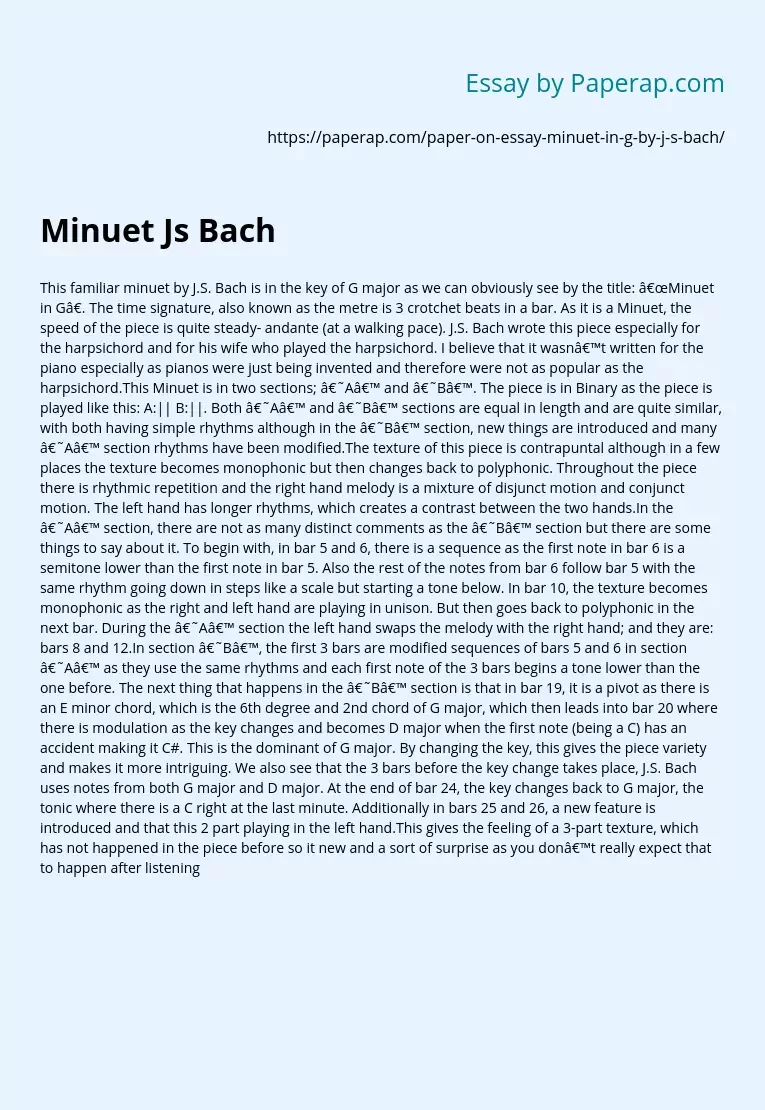The Tone of the Play Is Varied and Intriguing
Both ‘A’ and ‘B’ sections are equal in length and are quite similar, with both having simple rhythms although in the ‘B’ section, new things are introduced and many ‘A’ section rhythms have been modified.The texture of this piece is contrapuntal although in a few places the texture becomes monophonic but then changes back to polyphonic. Throughout the piece there is rhythmic repetition and the right hand melody is a mixture of disjunct motion and conjunct motion. The left hand has longer rhythms, which creates a contrast between the two hands.
In the ‘A’ section, there are not as many distinct comments as the ‘B’ section but there are some things to say about it. To begin with, in bar 5 and 6, there is a sequence as the first note in bar 6 is a semitone lower than the first note in bar 5. Also the rest of the notes from bar 6 follow bar 5 with the same rhythm going down in steps like a scale but starting a tone below.
In bar 10, the texture becomes monophonic as the right and left hand are playing in unison. But then goes back to polyphonic in the next bar. During the ‘A’ section the left hand swaps the melody with the right hand; and they are: bars 8 and 12.In section ‘B’, the first 3 bars are modified sequences of bars 5 and 6 in section ‘A’ as they use the same rhythms and each first note of the 3 bars begins a tone lower than the one before. The next thing that happens in the ‘B’ section is that in bar 19, it is a pivot as there is an E minor chord, which is the 6th degree and 2nd chord of G major, which then leads into bar 20 where there is modulation as the key changes and becomes D major when the first note (being a C) has an accident making it C#.
This is the dominant of G major. By changing the key, this gives the piece variety and makes it more intriguing.
We also see that the 3 bars before the key change takes place, J.S. Bach uses notes from both G major and D major. At the end of bar 24, the key changes back to G major, the tonic where there is a C right at the last minute. Additionally in bars 25 and 26, a new feature is introduced and that this 2 part playing in the left hand.This gives the feeling of a 3-part texture, which has not happened in the piece before so it new and a sort of surprise as you don’t really expect that to happen after listening to previous bars of the piece. In bars 29 and 21, there is a whole bar of quavers going up in steps like a scale but there is one difference apart from the note each scale starts on and that difference is that the scale in bar 21 is in the key in D major with the C# and the scale in bar 29 is in the key of G major. This gives contrast between the two scales. Additionally if we look at the next bar, bar 22 and 30, we can see that they same rhythm and sequence but because the notes are different, it is a modified sequence. Finally, in bar 31, we also experience something but it’s not to do with the texture but to do with rhythms. We are given a new rhythm that is similar to bars 20, 25, 26 where the rhythm is: ta ta-te ta whereas in bar 31, the rhythm is: ta-te ta ta. This is also unexpected but fits in nicely to join and lead up to the last chord as the notes get longer; from quavers, to crotchets and then in the last bar: a dotted minim.
The Tone of the Play Is Varied and Intriguing. (2019, Dec 05). Retrieved from https://paperap.com/paper-on-essay-minuet-in-g-by-j-s-bach/

